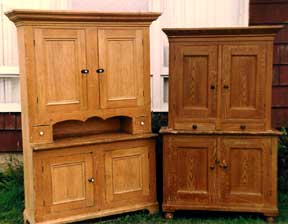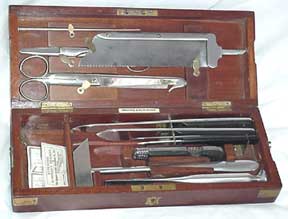Are all your Eggs in the eBay Basket? – Business of Doing Business – The Journal of Antiques and Collectibles – April 2003
by Ed Welch
Two years ago prices at Internet auction exceeded prices obtainable at shows and in the local marketplace. This is not as true today. Prices realized at Internet auctions are in decline.
The very best antiques and collectibles still bring top dollar on eBay and at the other popular Internet auctions. However, they bring the same or a higher price at any well-attended antique show like Brimfield.
The up-and-down prices of antiques and collectibles sold at Internet auction is not a new phenomenon. The same thing has happened twice before. A review of past price spikes and declines will make it easier to understand today’s declining Internet auction prices.
The antique trade before 1972 was so unlike today’s antique trade that it is almost impossible to make a comparison. There were no group shops, no flea markets, and no antique shows as we know them today. The antique show of the 1960s was called an “Antique Show and Sale.” Collectors displayed (showed off) their best antiques and tried to sell their duplicates and mistakes. Trade papers and price guides were in their infancy. Researching any antique was a near- impossible task.
Antique dealers bought all winter and sold all summer. Long-haul dealers with their large trucks would arrive in April and May. They bought period furniture if they could but, they were really after Victorian and oak furniture. An oak commode sold for $12, chests of drawers brought $65, a roll top desk brought between $125 and $150, and you could not give a round oak table away.
What we could not sell to the truckers, we tried to sell to the tourist in June, July, and August. After Labor Day, most selling stopped and a new buying season began. The group shop changed everything.
The first group shop in Maine was opened by Robert (Bob) Blair in the fall of 1972. For $15 a month, dealers could rent space in this group shop and do something they had never been able to do before, sell during the winter. We soon discovered that our $12 oak commode would easily sell at $25. In fact, the price went from $12 to $36 that first winter and stayed at that price for several years.
For the next five to ten years, group shops sprang up throughout the northeast and dealers rushed to rent space. I rented space at group shops in Maine, New Hampshire, and Massachusetts; seven in total. Group shops changed the very nature of my business. What had been a successful part-time endeavor turned into a profitable full-time business. At that time, I was convinced that the group shop was the answer to year round selling at high prices. And it was, until the “Antique Show and Sale” dropped the “Showing off” and concentrated on the “Sale.”
The antique show made it possible for rural dealers to expose there wares to collectors and dealers in large cities like New York, Baltimore, Washington D.C., and Miami. Furniture that I had been selling for $100 in rural Maine would bring $300 in large cities.
In the early 1980s, another Maine dealer and myself did three shows each winter in Florida. We left Maine on Tuesday, drove without stopping to make the Friday set-up. We sold Friday, Saturday, and Sunday. Sunday evening we packed up and headed for home. The drive down took 36 hours. The drive home took 32 hours.
We did this for several years because we could sell our products for between 50 and 100 percent more than they would bring in Maine. For example, a step back cupboard in old blue paint with a little restoration would sell for $600 in Maine. The same cupboard would easily sell for $1,200 in Florida, well worth the long drive and lack of sleep. Cupboards that had been stripped and cupboards that were out of proportion (height to width) were hard to sell in New England but sold fast in Florida. Rural dealers willing to do shows in large cities or haul south to places such as Charlotte, Atlanta, Richmond, Orlando, and Miami could double and triple their selling prices.
In the late 1980s, my wife dragged me kicking and screaming into the computer age. She refused to buy Nintendo, Packman, or any of the early games played by hooking a computer to a television screen. Our children were only allowed to play computer games that they made themselves. Store bought games were a treat after they had completed a computer program.
At my wife’s insistence, I posted antiques for sale on bulletin boards, in news groups and in classified ads then available on the Internet. There was no WWW (World Wide Web). Everything was done by FTP (File Transfer Protocol). To my amazement, I begin making sales immediately. My largest sale resulted in a profit of $5,000. I was hooked.
When the World Wide Web came to the Internet followed two years later by eBay, I was ready to take full advantage of both. I spent my time selling on eBay. My wife spent six-months hand-typing the programming codes for my first online sales catalog. I still use this catalog today.
It is hard to describe the early years of eBay. I sold junk for hundreds of times its value. I sold mid-level antiques for thousands of times their value. I sold high quality antiques for more money than I thought possible. Of course, such unrealistic profits are no longer possible on eBay.
The group shop, the antique show, and eBay share things in common. The first dealers to use these selling methods made a lot of money. However after a few years, prices leveled and then declined. It is still possible to make high profits on eBay, in group shops, and at antique shows. But it is no longer automatic, you must work at it.
The next large-profit market is developing as you read these words. Large profits from Internet sales now go to dealers who sell from their own home page or online catalog. eBay has become a discount marketplace, the Cyberspace equivalent of Wal-Mart. Profits in a discount marketplace depend on volume. Antiques and collectibles are not available in quantity and therefore are not suited for selling in a discounted marketplace.
There are four methods of selling on the Internet. Can you name all four methods? Do you know how to use these methods? Or, are all your eggs in the eBay basket?

The cupboard on the left has been stripped. Such cupboards were difficult to sell in New England 20 years ago. The cupboard on the right is out of proportions. It is too wide for its height. It is grain-painted pine and has round Empire Style feet. I was not able to sell these cupboards at Brimfield or any other New England show. I did sell both in Florida for twice the amount I had asked in New England. Although I sold each cupboard for more money than I paid, I lost money. I had them in stock too long, hauled them to too many shows, and did not make enough mark-up to cover all my overhead expenses. They are classic examples of the types of antiques that dealers should not buy.

Post mortem surgical kit in a mahogany case. In the medical trade, kits such as this one are considered low-end merchandise. They sell between $500 and $1,200. I have bought and sold nine such kits in the last four years. At the height of eBay, post mortem kits sold for as much as $2,100. Today they bring around $700 at Internet auction. However, post mortem kits sell between $900 and $1,200 at major antique shows.
-
- Assign a menu in Theme Options > Menus WooCommerce not Found





Related posts: